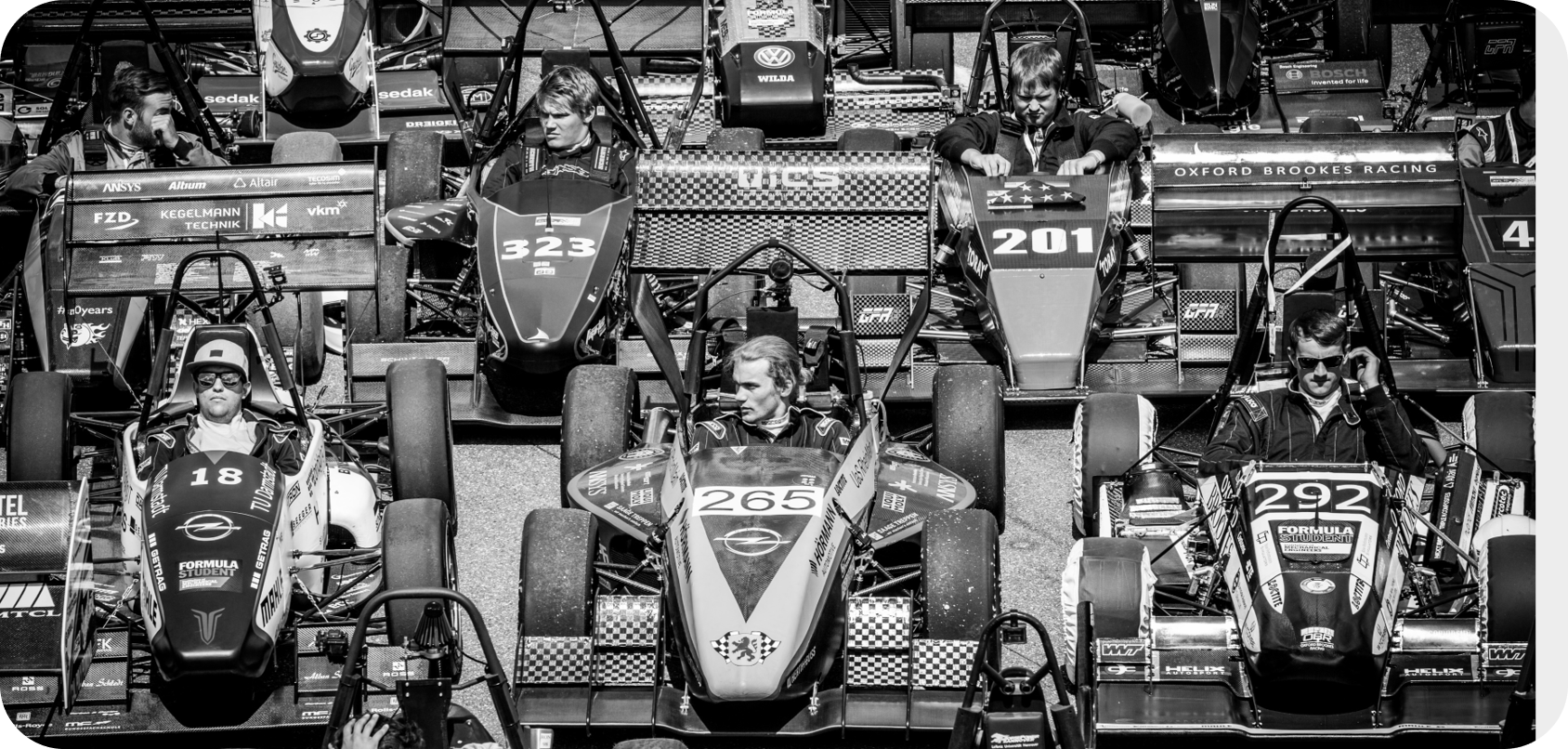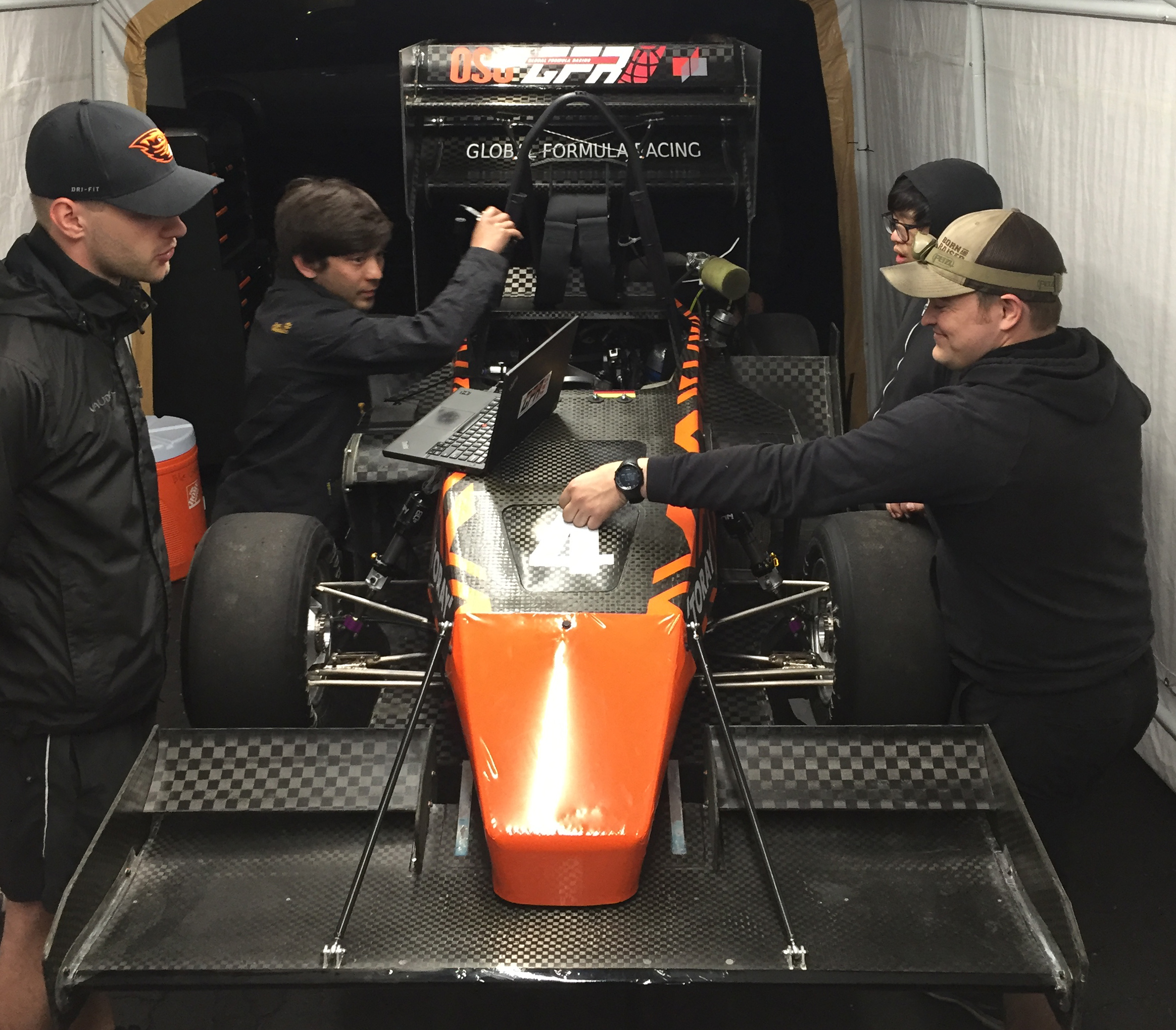I - Background #

Various teams at Formula Student Germany 2016. Photo courtesy of Formula Student Germany - media team.
Introductory Thoughts #
In any significant engineering endeavor, there are approximately 4 ’tiers’ of engineering required:
TIER 1: DETAIL AND COMPONENT DESIGN - Designing parts, calculating loads, masses, stresses, stiffnesses, heat transfer rates, etc.
TIER 2: VEHICLE LEVEL INTEGRATION- Joining all the components together into a complete functioning product. This is the level in which conflicting goals between different components and sub-systems should be identified and addressed.
TIER 3: COMPETITION LEVEL INTEGRATION- Answering the question: how does this design tie in with the overall organizational strategy?
TIER 4: PROJECT-LEVEL MANAGEMENT - How the end performance ties in with other managerial level burdens like time and budget management, usage of human resources, etc. Functions performed at this level: Holding the whole project together so that you deliver this year, keep everyone reasonably happy, and hand over a healthy project to future teams.
These ideas are borrowed from this post.
A formal engineering education instills in students core engineering principles that enable them to produce ‘Tier 1’ engineering. However, success in any sufficiently complex endeavor requires competency with all the ’tiers’, and realizing success with the other tiers requires getting ones hands dirty and learning on the job.
The FSAE competition allows young engineers to cut their teeth on a sophisticated project, with the pressure of international competition motivating success. The open ended nature of the FSAE competition teaches young engineers many things, chief among them that figuring out the right problem to solve is often times just as important as the process of solving the problem.
There is approximately 8 months from the end of the previous years competition season to the beginning of the next. While the competition forces no schedule on the teams, GFR as an organization splits its time up into 3 months for design, 3 months for manufacturing, and 2 months for testing. This tight time line, combined with the need to balance academics with team commitments, and the interpersonal challenges of a team comprised of solely voluntary effort, make for a very formative experience.

Last minute preparations being made to GFR17c ahead of its first competition.
The Competition #
A FSAE team can score a maximum of 1000 points at a competition.
Approximately 1/3 are from the following ‘static’ events, where the car is largely a prop to highlight the ‘soft’ skills of the team.
- Cost - 100 points - Evaluates the ability of the team to consider budget and incorporate production considerations for production and efficiency.
- Business Presentation - 75 points - Evaluates the team’s ability to develop and deliver a comprehensive business, logistical, production, or technical case that will convince outside interests to invest in the team’s concept.
- Engineering Design - 150 points - Evaluates the engineering effort that went into the vehicle and how the engineering meets the intent of the market both in terms of vehicle performance and overall value.
In total, the static events compromise 325 of the 1000 total points. The rest come from the dynamic events, where the car is on track and is assessed on its raw performance.
- Acceleration - 100 points - Evaluates the vehicle acceleration in a straight line on flat pavement.
- Skid Pad - 75 points - Measures the vehicle cornering ability on a flat surface while making a constant radius turn.
- Autocross - 125 points - Evaluates the vehicle maneuverability and handling qualities on a tight course.
- Endurance - 275 points - Evaluates the overall performance of the vehicle and tests the durability and reliability.
- Fuel Efficiency - 100 points - Evaluates the fuel/energy used to complete the Endurance event.